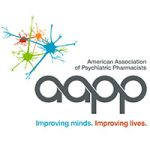Generic name: guanfacine (GWAHN fa seen)
Brand name: Intuniv® (guanfacine hydrochloride) — extended release
All FDA warnings are at the end of this fact sheet. Please consult them before taking this medication.
Guanfacine is a non-stimulant prescription medication that is used to treat attention-deficit hyperactivity disorder (ADHD) in individuals between 6 and 17 years of age. Guanfacine is also used to treat blood pressure in both children and adults.
Symptoms of ADHD interfere with an individual’s ability to function at school or work or in social settings and include:
A person may have severe inattention without hyperactivity or impulsivity.
Guanfacine is used in addition to non-medication treatments to manage ADHD symptoms.
Although some symptoms may improve within days of starting guanfacine, it may take several weeks before you notice the full benefits of the medication.
If you are planning on becoming pregnant, notify your health care provider so that he/she can best manage your medications. People living with ADHD who wish to become pregnant face important decisions. There are no well-controlled studies of guanfacine use in pregnant women. Animal studies did not demonstrate evidence of fetal harm. It is important to discuss the risks and benefits of treatment with your doctor and caregivers.
Regarding breastfeeding, caution is advised since it is not known if guanfacine passes into human breast milk.
Guanfacine is usually taken one to two times per day. Guanfacine can be taken with or without food. However, taking it with a high fat meal can increase absorption and may increase exposure.
The dose of guanfacine immediate release usually ranges from 0.5 mg to 3 mg per day. The dose of guanfacine extended release usually ranges from 1 mg to 7 mg per day. Only your health care provider can determine the correct dose for you.
Extended release tablets (Intuniv®) should not be crushed, chewed or divided. Swallow the tablet whole.
Do not stop taking the medicine without talking to your prescriber. Gradual withdrawal is needed if the drug is to be stopped.
If you miss a dose of guanfacine take it as soon as you remember unless it is closer to the time of your next dose. Discuss this with your health care provider. Do not double your next dose or take more than what is prescribed.
Guanfacine may cause dizziness or drowsiness, especially when first starting the medication. Make sure you know how you react to the medication before you drive, operate machinery, or participate in other activities that may be dangerous if you are not alert.
Avoid drinking alcohol or using illegal drugs while you are taking this medication. They may decrease the benefits (e.g., worsen your condition) and increase adverse effects (e.g., sedation) of the medication.
If an overdose occurs call your doctor or 911. You may need urgent medical care. You may also contact the poison control center at 1-800-222-1222.
Overdosing with guanfacine may cause sleepiness, dizziness, low blood pressure and slow heart rate.
A specific treatment to reverse the effects of guanfacine does not exist.
Common side effects
Rare side effects
There are no known problems associated with long term use of guanfacine.
The following medications may increase the levels and effects of guanfacine:
The following medications may decrease the levels and effects of guanfacine: rifampin (Rifadin®), carbamazepine (Tegretol®), and phenytoin (Dilantin®)
Guanfacine may increase the levels and effects of: valproic acid (Depakene®, Depakote®, Depakote-ER®, Stavzor®)
It may take 4 – 8 weeks to get the maximum benefit once the right dose is determined. However, improvements in some symptoms may occur sooner.
Guanfacine does not have any Black Box Warnings.
Last Reviewed: January 2024
Provided by

Important Disclosure: This information is being provided as a community outreach effort of the American Association of Psychiatric Pharmacists. This information is for educational and informational purposes only and is not medical advice. This information contains a summary of important points and is not an exhaustive review of information about the medication. Always seek the advice of a physician or other qualified medical professional with any questions you may have regarding medications or medical conditions. Never delay seeking professional medical advice or disregard medical professional advice as a result of any information provided herein. The American Association of Psychiatric Pharmacists disclaims any and all liability alleged as a result of the information provided herein.
©2023 The American Association of Psychiatric Pharmacists (AAPP) and the National Alliance on Mental Illness (NAMI). AAPP and NAMI make this document available under the Creative Commons Attribution-NoDerivatives 4.0 International License. Last Updated: January 2016.
NAMI HelpLine is available M-F, 10 a.m. – 10 p.m. ET. Call 800-950-6264,
text “NAMI” to 62640, or email. In a crisis, call or text 988 (24/7).